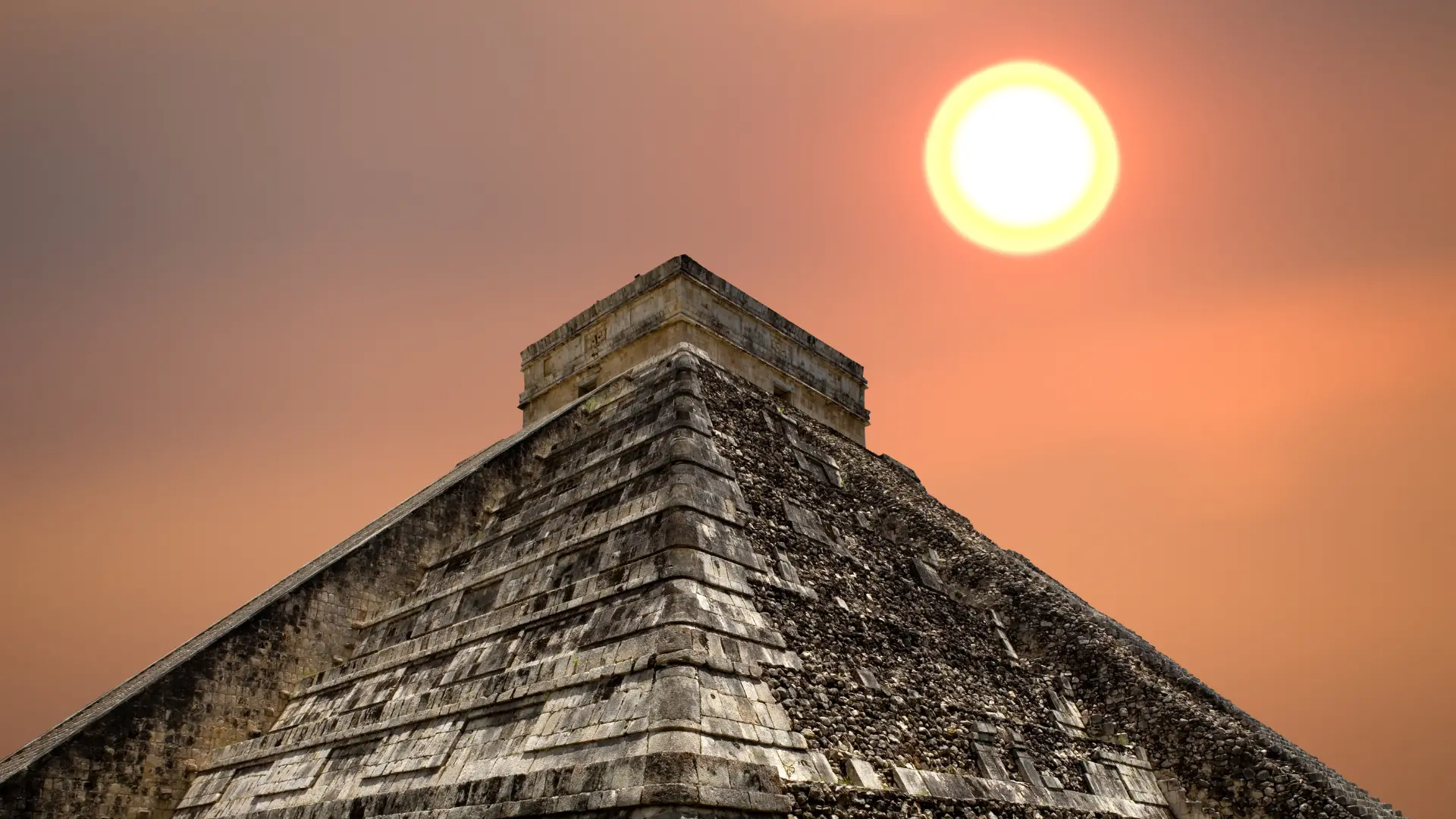Every year, on the vernal and autumnal equinoxes, an extraordinary phenomenon takes place at the ancient Mayan city of Chichen Itza. As the sun aligns perfectly with the Pyramid of Kukulcan, also known as El Castillo, a mesmerizing spectacle unfolds: the shadow of a serpent appears to slither down the steps of the pyramid. This awe-inspiring event, known as the equinox at Chichen Itza, is a testament to the remarkable astronomical knowledge and architectural prowess of the Mayan civilization. Join us on a journey to explore the mysteries and cultural significance of this fascinating phenomenon, as we delve into the history, symbolism, and ancient traditions surrounding the equinox at Chichen Itza.
The Pyramid of Kukulcan, also referred to as El Castillo (The Castle), stands as the crowning jewel of Chichen Itza. This iconic structure is a testament to the Mayan civilization’s architectural mastery and celestial precision. Rising 30 meters into the sky, the pyramid is comprised of four sides, each featuring a staircase with 91 steps, totaling 364 steps when including the platform on top as the 365th step—a nod to the Mayan solar calendar.
Constructed with meticulous attention to astronomical alignment, the Pyramid of Kukulcan serves as a grand celestial observatory. During the equinoxes, the play of light and shadow on its steps creates the illusion of a serpent descending from the heavens—a manifestation of Kukulcan, the feathered serpent deity central to Mayan cosmology. This remarkable phenomenon reflects the Mayans’ profound understanding of the cosmos and their reverence for the cycles of nature.

Beyond its astronomical significance, the Pyramid of Kukulcan also served as a multifunctional ceremonial complex, hosting rituals, ceremonies, and sacrifices integral to Mayan religious practices. Its imposing stature and intricate architectural details continue to captivate visitors from around the world, inviting them to ponder the mysteries of the ancient Mayan civilization and its enduring legacy at Chichen Itza.
The equinox, a celestial event steeped in astronomical significance, marks the two moments each year when the plane of Earth’s equator passes through the center of the sun. Occurring around March 20th and September 22nd, the vernal and autumnal equinoxes respectively, this phenomenon brings about a delicate balance between day and night, with nearly equal durations of sunlight and darkness across the globe.

For civilizations throughout history, the equinoxes have held profound cultural and spiritual significance, often commemorated with rituals, festivals, and ceremonies. At Chichen Itza, the equinox takes on added significance as it aligns with the architectural marvels of the ancient Mayan city, casting light on the intricate relationship between celestial events and human endeavors.
The Serpent Effect, a mesmerizing spectacle witnessed during the equinox at Chichen Itza, is a breathtaking display of celestial alignment and architectural ingenuity. As the sun’s rays illuminate the Pyramid of Kukulcan, the play of light and shadow on its staircase creates the illusion of a serpent slithering down the structure.
This extraordinary phenomenon is a testament to the advanced astronomical knowledge and precision engineering of the ancient Maya. The serpent, symbolizing the feathered serpent deity Kukulcan, holds profound significance in Mayan cosmology, representing themes of renewal, fertility, and cosmic balance.
The Serpent Effect at Chichen Itza serves as a powerful reminder of the deep connection between the Maya civilization and the natural world. It captivates visitors from around the globe, inviting them to marvel at the intersection of art, architecture, and astronomy in one of the world’s most revered archaeological sites.
Visiting Chichen Itza during the equinox offers a unique and unforgettable experience, providing a rare opportunity to witness the convergence of ancient architectural wonders and celestial phenomena. If you’re planning to embark on this extraordinary journey, here are some tips to enhance your visit:
- Timing is Key: The equinox occurs around March 20th and September 22nd each year, but the exact date may vary slightly. Plan your visit accordingly to coincide with this celestial event for the best chance to witness the Serpent Effect on the Pyramid of Kukulcan.
- Arrive Early: Chichen Itza is a popular destination, especially during the equinox, so arriving early in the day can help you beat the crowds and secure a good vantage point for viewing the phenomenon.
- Be Prepared: Wear comfortable clothing and sturdy footwear suitable for exploring the archaeological site, as well as sunscreen, a hat, and plenty of water to stay hydrated in the warm climate.
- Respect the Site: Chichen Itza is a UNESCO World Heritage site and holds immense cultural and historical significance. Respect the rules and regulations in place to preserve the site for future generations, including refraining from climbing on the ancient structures.
- Be Patient: As the time of the equinox approaches, be prepared to wait patiently for the Serpent Effect to unfold. The exact moment when the serpent shadow appears may vary slightly depending on atmospheric conditions and other factors.
- Capture the Moment: Bring a camera or smartphone to capture this once-in-a-lifetime experience, but also take a moment to simply appreciate the beauty and symbolism of the Serpent Effect with your own eyes.
- Explore Beyond the Equinox: While the equinox is a highlight of any visit to Chichen Itza, take the time to explore the other fascinating archaeological structures and landmarks throughout the site, each with its own unique history and significance.
By following these tips and guidelines, you can make the most of your visit to Chichen Itza during the equinox and create memories that will last a lifetime.








